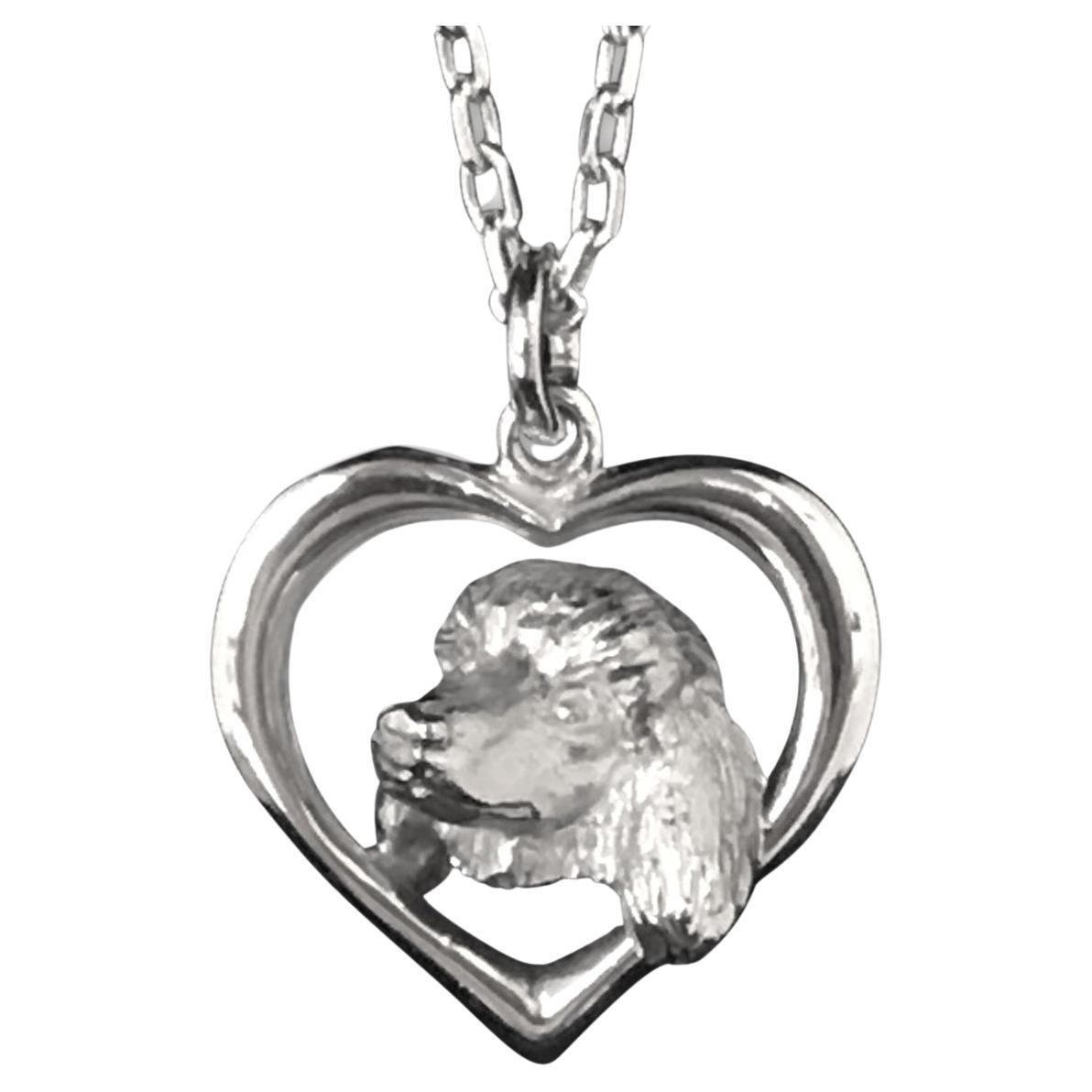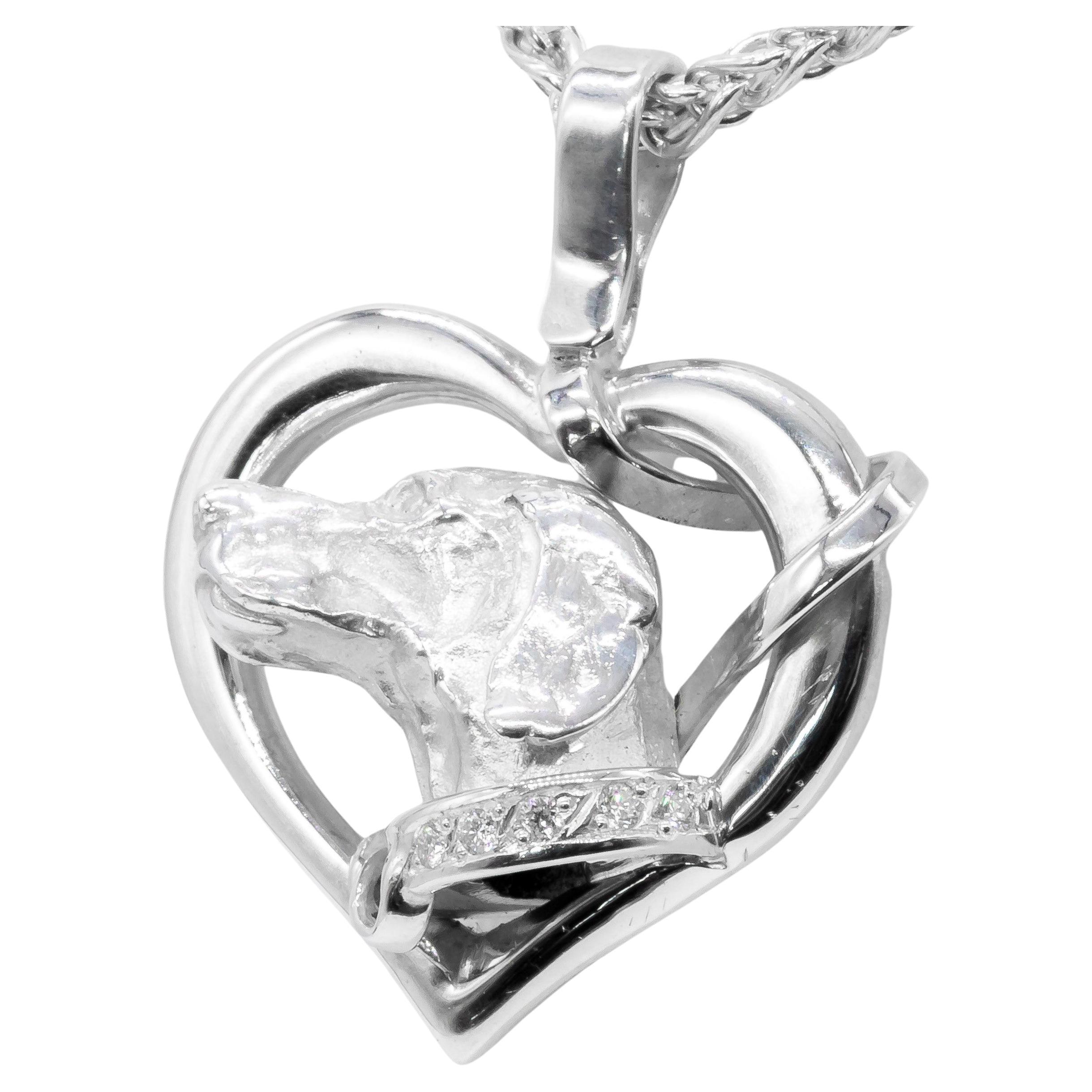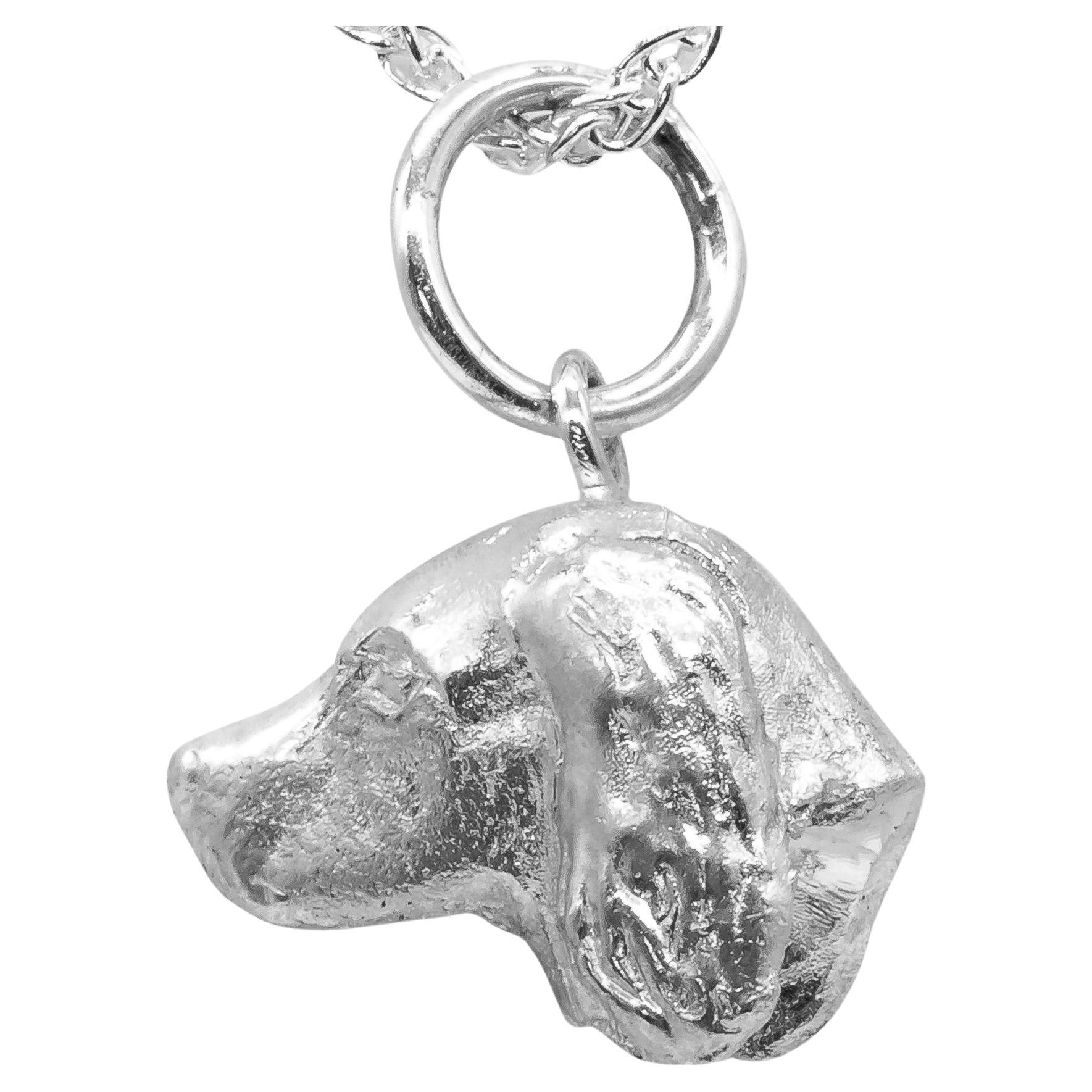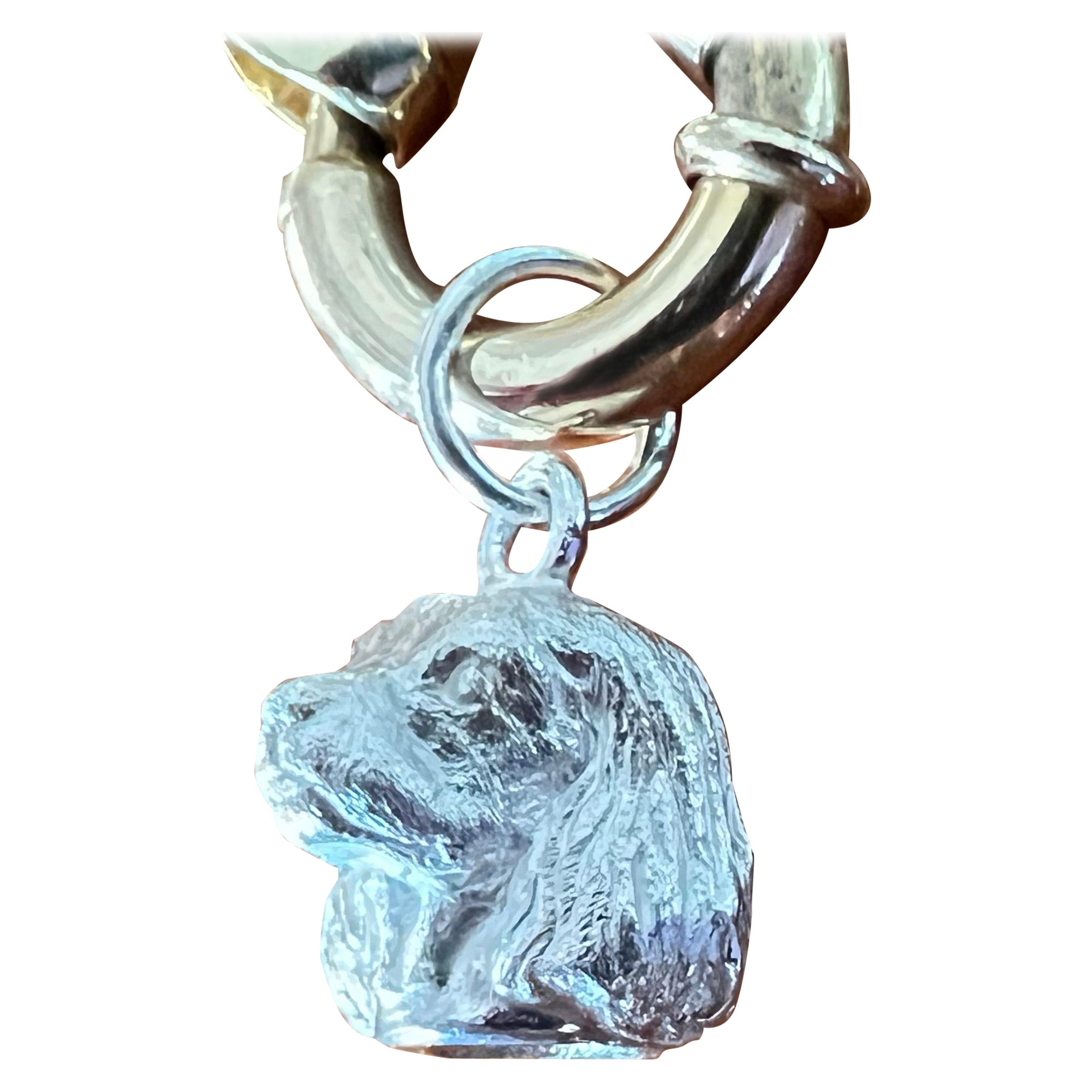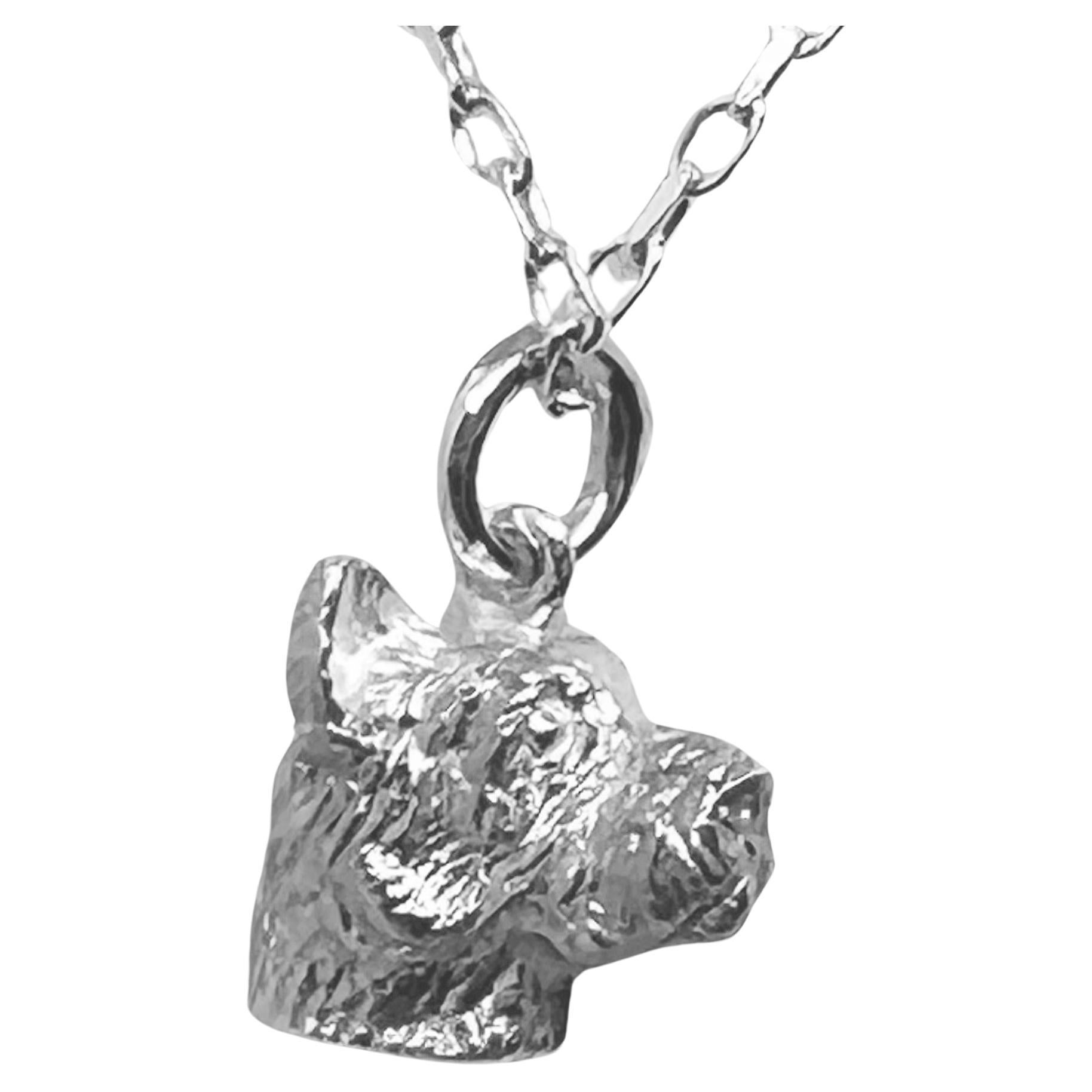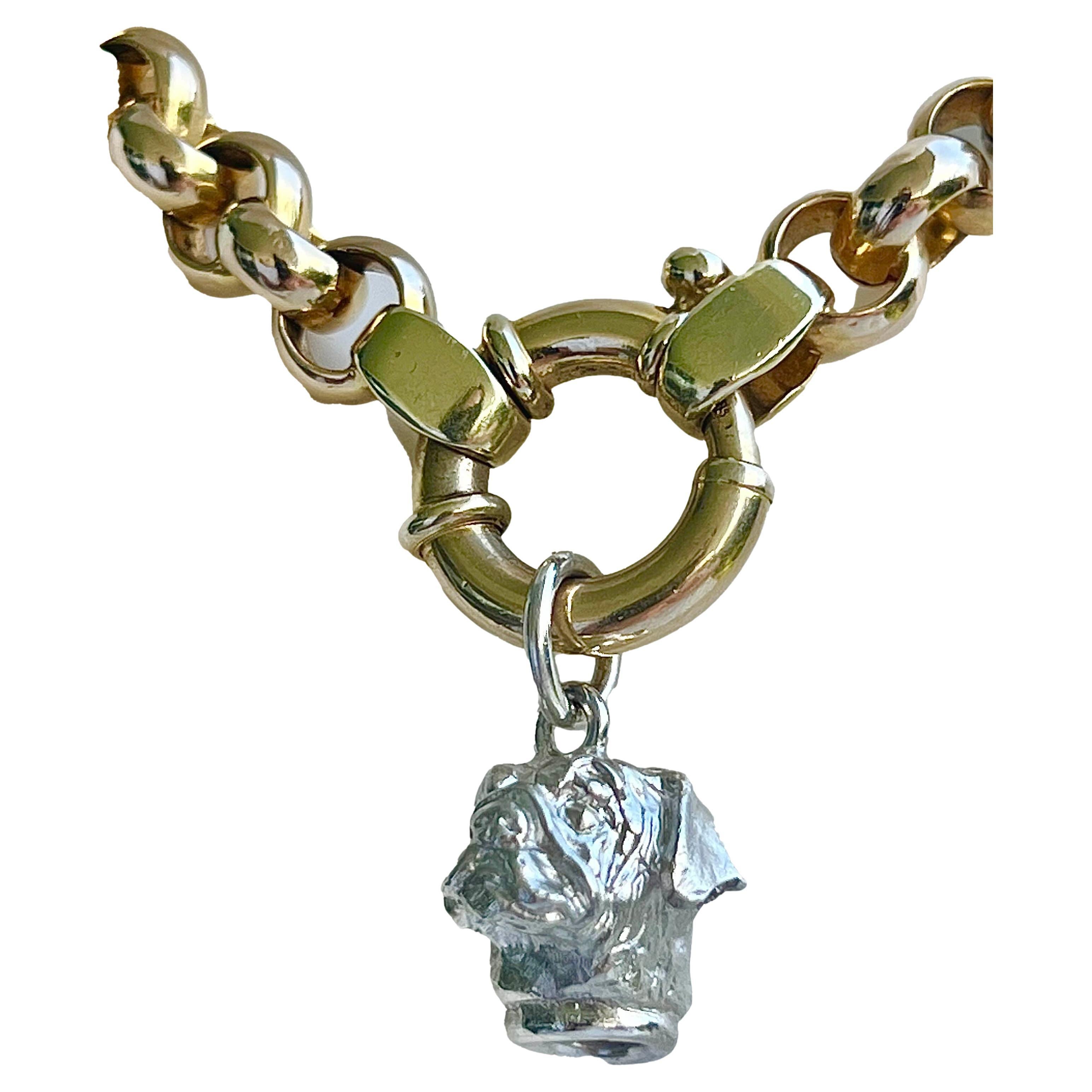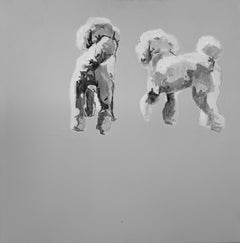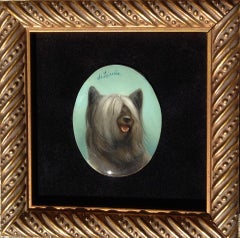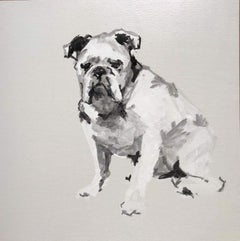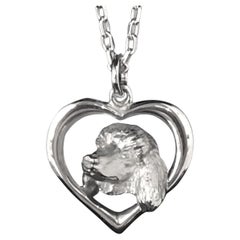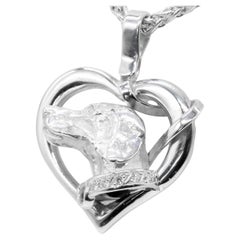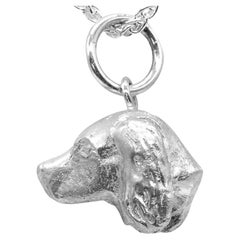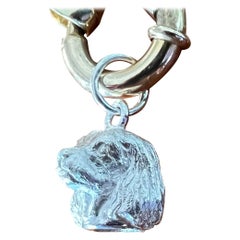Items Similar to Pendant Poodle sterling silver miniature sculpture/heart Paul Eaton of England
Want more images or videos?
Request additional images or videos from the seller
1 of 5
Paul EatonPendant Poodle sterling silver miniature sculpture/heart Paul Eaton of England2020
2020
$675
£512.72
€590.82
CA$950.57
A$1,053.84
CHF 553.84
MX$12,897.33
NOK 6,916.85
SEK 6,492.16
DKK 4,410.14
About the Item
From Great Britain Paul Eaton VPRMS MAA hand carved a Poodle pendant an elegant sterling-silver miniature dog sculpture made into a jewelry piece you can wear close to your heart. The title of the pendant is "Love your Dog", the head is framed with a heart. A perfect bespoke realist Poodle pendant for Valentines Day, Mother's Day or any day for the dog and jewelry lover. Realist animal jewelry can be customized with any breed in Sterling silver, 9ct, 18ct and any combination of metal. Poodle lovers will be thrilled to have this as a pendant or charm which measures 1" x 1" x .5" deep. Paul Eaton possibly the world's best miniature sculptor of animals is, luckily for consumers, also a master gold/silversmith.
A sterling silver necklace is available for $180. The pendant is in stock.
- Creator:Paul Eaton (1955, English)
- Creation Year:2020
- Dimensions:Height: 1 in (2.54 cm)Width: 1 in (2.54 cm)Depth: 0.5 in (1.27 cm)
- Medium:
- Movement & Style:
- Period:
- Condition:
- Gallery Location:Charleston, US
- Reference Number:Seller: 6741stDibs: LU166729155622
About the Seller
5.0
Vetted Professional Seller
Every seller passes strict standards for authenticity and reliability
Established in 2001
1stDibs seller since 2021
84 sales on 1stDibs
Typical response time: <1 hour
- ShippingRetrieving quote...Shipping from: Charleston, US
- Return Policy
Authenticity Guarantee
In the unlikely event there’s an issue with an item’s authenticity, contact us within 1 year for a full refund. DetailsMoney-Back Guarantee
If your item is not as described, is damaged in transit, or does not arrive, contact us within 7 days for a full refund. Details24-Hour Cancellation
You have a 24-hour grace period in which to reconsider your purchase, with no questions asked.Vetted Professional Sellers
Our world-class sellers must adhere to strict standards for service and quality, maintaining the integrity of our listings.Price-Match Guarantee
If you find that a seller listed the same item for a lower price elsewhere, we’ll match it.Trusted Global Delivery
Our best-in-class carrier network provides specialized shipping options worldwide, including custom delivery.More From This Seller
View AllPoodles, minimalist black and white dog painting of a by Ian Mason, British
By Ian Mason
Located in Charleston, US
A Poodle Pair, this stunning large minimalist black and white painting of Poodle dogs, is a contemporary portrait in acrylic on canvas. Ian Mason's portrai...
Category
2010s Minimalist Animal Paintings
Materials
Acrylic
Realistic detailed oil of a romantic Schnauzer dog painting in a frame
By Beth de Loiselle
Located in Charleston, US
Beth de Loiselle's , "Schnauzer", is a beautifully detailed realistic dog painting of a loving Schnauzer. Beth de Loiselle's dog/animal paintings always amaze with her fine detail. As an animal portraitist Beth’s keen observations of this Schnauzer capture that particular expression, compassion and familiarity to its breed. Beth was taught the classical old masters style at the esteemed Schuler School of Fine Art. Now viewed as an expert she is an instructor of old master techniques at the school. Beth de Loiselle is a member of The National Oil and Acrylic Painter’s Society, Oil Painters of America, Audubon Artists and the International Guild of Realism.
Signed upper left hand with full name.
The painting is framed in a simple gold frame...
Category
2010s Realist Animal Paintings
Materials
Oil
England's popular Skye Terrier, dog 1" x 2" oval miniature on fauxvelvet w/frame
By Beth de Loiselle
Located in Charleston, US
Master miniaturist, Beth de Loiselle's realistic oil 1" x 2" oval miniature painted on ivorine of England's popular dog the Skye Terrier is exquisitely d...
Category
21st Century and Contemporary Realist Animal Paintings
Materials
Oil, Porcelain
Bulldog Minimal Black and White Dog Painting on Board with Gray Background
By Ian Mason
Located in Charleston, US
This lovely minimal black and white dog painting of a Bulldog is a contemporary portrait in acrylic on board which displays Ian Mason's unique abil...
Category
21st Century and Contemporary Minimalist Animal Paintings
Materials
Ink, Acrylic
"Phalco's Look” Spaniel, Romantic Dog Photograph with beveled plexiglass frame
Located in Charleston, US
Alain Foussier, born in France living in the Netherlands, perfects the mood and spirit of Spaniel dogs with his portrait photography. His Spaniel dog a...
Category
2010s Romantic Color Photography
Materials
Photographic Paper
Small Dog Painting of a Serious and Intent Greyhound Focused on What?
Located in Charleston, US
Discover the captivating elegance of Valarie Wolf’s small yet powerful dog painting, "Focused." This 4" x 6" original artwork portrays a refined Greyhound, its intense gaze piercing ...
Category
2010s Realist Portrait Paintings
Materials
Oil
You May Also Like
Pendant Poodle Sterling Miniature Dog Head Sculpture/Heart Paul Eaton of England
Located in Charleston, SC
From Great Britain Paul Eaton VPRMS MAA hand carved a Poodle pendant an elegant sterling-silver miniature dog sculpture made into a jewelry piece you ca...
Category
2010s British Contemporary Pendant Necklaces
Paul Eaton 'England' Pendant Diamond & Sterling Miniature Labrador Head & Collar
Located in Charleston, SC
From Great Britain Paul Eaton VPRMS MAA sculpted a Labrador head with an elegant diamond set collar resting in a heart. The pendant will be a jewelry piece you can wear close to your heart. A perfect bespoke Labrador sculpture...
Category
2010s British Artist Pendant Necklaces
Materials
Diamond, Sterling Silver
Paul Eaton 'England' Pendant Sterling Silver Miniature Spaniel Dog Head
Located in Charleston, SC
From Great Britain Paul Eaton VPRMS MAA sculpted a Spaniel dog head (sml 1/2" x 1") pendant. An elegant sterling-silver bespoke miniature Spaniel, dog ...
Category
2010s British Artist Pendant Necklaces
Materials
Sterling Silver
Paul Eaton Cavalier Miniature King Charles Spaniel Sterling Charm or Pendant
Located in Charleston, SC
Discover the exquisite art of England’s renowned miniature wildlife sculptor, PAUL EATON, with his sculpted sterling silver Cavalier King Charles Spaniel dog charm or pendant. Each b...
Category
2010s British Artist Pendant Necklaces
Materials
18k Gold, 9k Gold, Sterling Silver
Paul Eaton Sculpted Cairn Terrier Sterling Silver Charm or Pendant
Located in Charleston, SC
Discover the exquisite art of England’s renowned miniature wildlife sculptor, PAUL EATON, with his sculpted sterling silver Cairn Terrier dog charm or pendant. Each bespoke animal...
Category
2010s English Artisan Pendant Necklaces
Materials
Sterling Silver
Paul Eaton Hand Carved Miniature Pug Sterling Silver Charm or Pendant
Located in Charleston, SC
Discover the exquisite art of England’s renowned miniature wildlife sculptor, PAUL EATON, with his sculpted sterling silver Pug dog charm or pendant. Each bespoke animal pendant is m...
Category
21st Century and Contemporary British Artist Pendant Necklaces
Materials
Diamond, Yellow Diamond, Brown Diamond, Tsavorite, Other, 18k Gold, 9k G...
More Ways To Browse
Dog Carved Sculpture
Valentine Sculpture
Dog Head Sculpture
Poodle Sculpture
Poodle Gold
Poodle Charm
Anton Mauve
Armani Sculpture
Barbara Falk
Bardone Guy
Bearbrick Brillo
Black Labrador Painting
Bosphorus Painting
Butterfly Morpho Framed
C A Murphy Painting
Campari Vintage Art Posters
Cattle Drover
Cheetah Oil Painting
